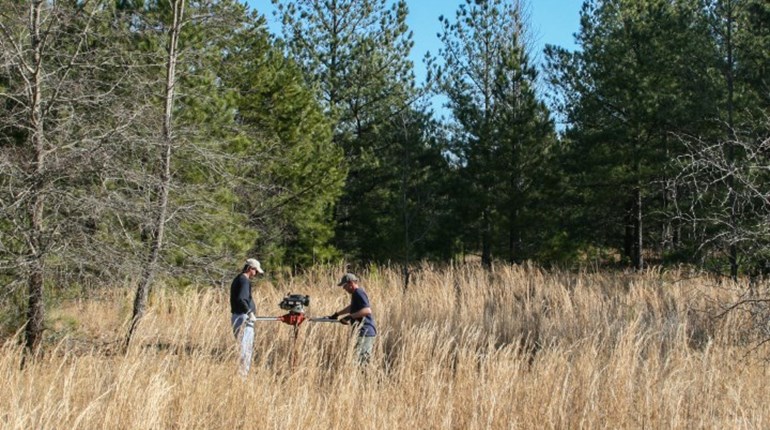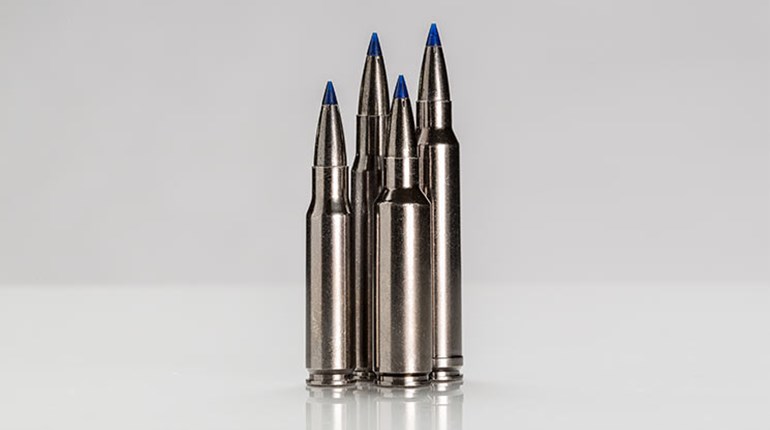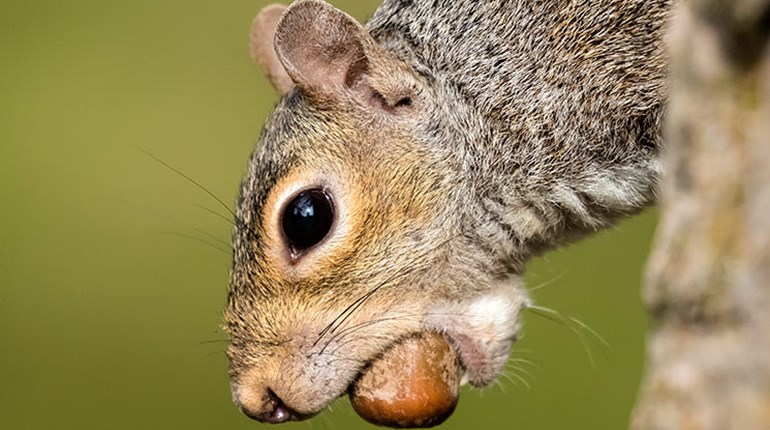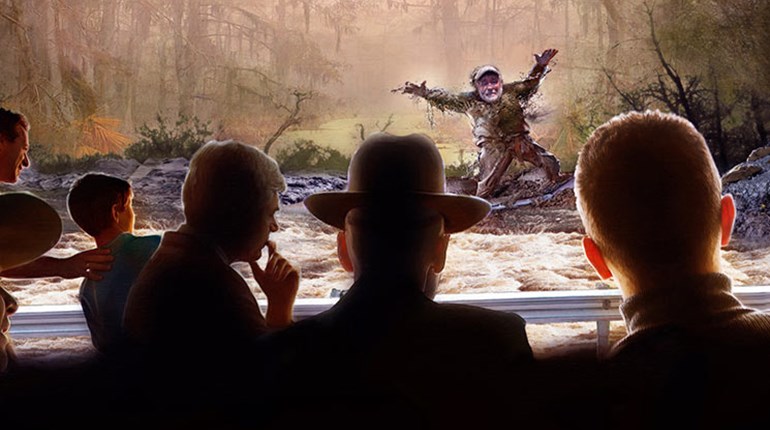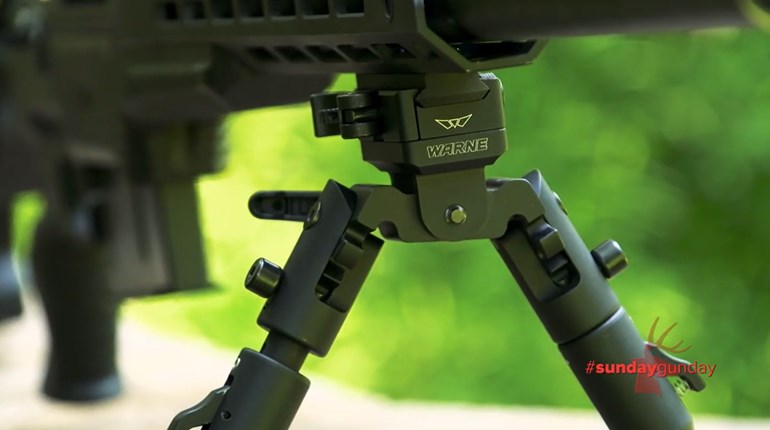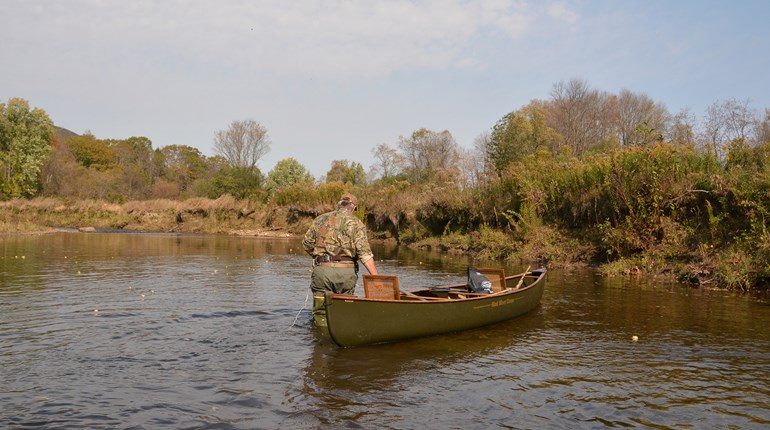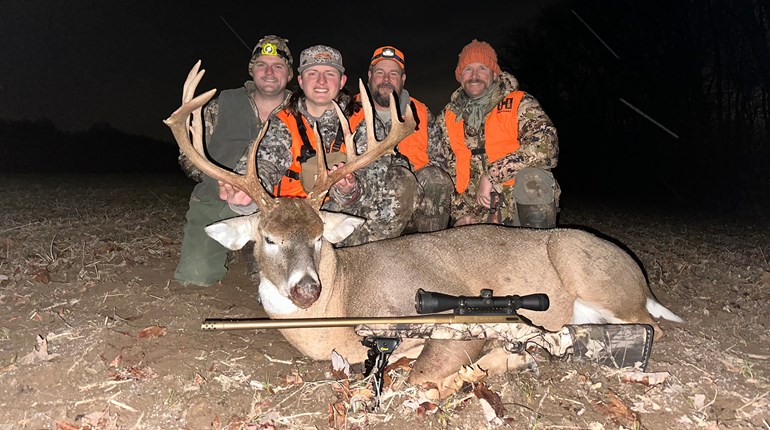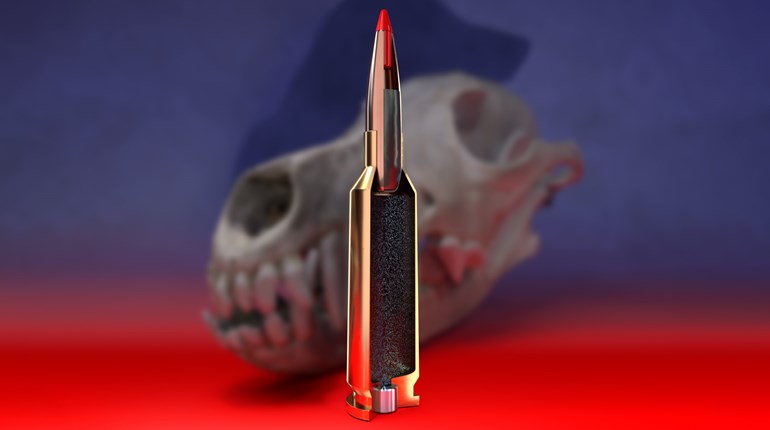
“Badges? We don’t need no stinkin’ badges!”
Sorry, but it’s some kind of an unwritten law that you must invoke this quote anytime the Sierra Madre Mountains are mentioned. Even though the film was based in Mexico, “The Treasure of the Sierra Madre,” or more specifically this quote from it, has become a piece of Americana. A quick and lazy search found more than 50 times it’s been referenced on television and in movies.
The trouble is it’s all wrong. What the Mexican bandit, Gold Hat, actually said in Warner Bros.’ 1948 movie was: “Badges? We ain’t got no badges. We don’t need no badges. I don’t have to show you any stinkin’ badges!”
 Trust me, that was cleaned up a lot from what he said in the book!
Trust me, that was cleaned up a lot from what he said in the book!
No matter, the misquote has become a big part of our culture and in 1990, “The Treasure of the Sierra Madre” was selected for preservation in the United States National Film Registry by the Library of Congress as being “culturally, historically or aesthetically significant.” That was due, no doubt, to the wide use of the incorrect quote.
I’ll tell you another thing that’s wrong. The treasure that the main characters were after was gold, but they misspelled the word. It should have been Gould. The true treasure of the Sierra Madres is found not with a shiny metal that has little value beyond what is arbitrarily assigned by society, but with this subspecies of wild turkey. Seeking the Gould’s turkey here offers both an unparalleled hunting experience and a cultural awakening to those traveling in search of real treasure.
The Gould’s is one of the least understood and least hunted of the North American turkey subspecies. Most serious turkey hunters know the Eastern, Osceola, Rio Grande and Merriam’s. Taking all of those birds is considered to be a Grand Slam by the National Wild Turkey Federation (NWTF). Gould’s turkeys are found in limited numbers in southern Arizona and New Mexico, but to hunt them most people travel to northwestern Mexico. Add one to your wall, and you have a Royal Slam. A seperate species all its own, the ocellated turkey is found in southeastern Mexico and Central America. If you get all six it is a World Slam.
The Gould’s turkey was first described in 1856 by John Gould, an English ornithologist and bird artist. Gould was a rock star of bird identification and has a tremendous number of species from around the world named after him. He even worked with Darwin and identified Darwin’s famous finches.
According to the NWTF, the Sierra Madre Occidental Mountains are the center of the Gould’s subspecies’ Mexican range. Gould’s are mountain birds and are found at elevations ranging from 4,500 to 6,500 feet in the United States and as high as 9,800 feet in Mexico. They live in some of the roughest terrain to be found in turkey hunting.
The NWTF says the Gould’s is the largest turkey subspecies, which seems to counter Bergmann’s rule that states the farther a species is from the equator, the larger its body size. My guess is their body size comes from living at an elevation with a climate that mimics more northern regions, but that’s just a guess.
Gould’s turkeys resemble Merriam’s turkeys, but they have longer legs, larger feet and longer tail feathers than the other species. The main colors of their body plumage are copper and greenish-gold, although their coloration has also been described as blue-green. They have distinctive white tips on their tail feathers and rump coverts, which usually separate to show an eyelash-like appearance. Lower back and rump feathers reflect copper and greenish-gold colors, not like the faintly iridescent velvety black found on the Merriam’s. Hens have a less pronounced metallic greenish and reddish sheen, and instead are more purplish.
In short, these are striking birds.
I was lucky enough to complete my World Slam years ago. I first hunted Gould’s turkeys in northern Sonora and loved the mountain country that is the habitat for these birds. Despite its political and social troubles, Mexico is a wonderful country with some wild places that are full of hunting adventure. The experience of hunting the Gould’s left me with a lot of good memories.
Although I have hunted Mexico many times over the years and for a wide variety of game, the truth is I have been avoiding the country for a while due to all the unrest and crime. So when I got an invite to hunt Gould’s turkeys in Chihuahua, I hesitated. Then, when I found out we would be hunting in June, I said no. But Cally Morris is persistent. He is also one of the most knowledgeable turkey guys I know, so when he assured me it was safe (actually he sarcastically said, “Don’t be scared, I’ll hold your hand.”) and told me these birds respond well to calls in June, I believed him. The best selling point was the obvious: turkey hunting was done everywhere else, so why not extend my season and give June hunting a shot?

I am glad I did. Once again, hunting Gould’s turkeys brought me into some wonderful country where I met some wonderful people, ate some wonderful food and sipped a few wonderful margaritas, which for the record always taste better in Mexico. That’s not to say it went perfectly though; my hunts seldom do.
I much prefer to use my own shotgun, or at least one I have had a chance to test extensively on the shooting range, but it’s very difficult to get firearms into Mexico. To avoid problems, I decided to borrow a gun when I got there. It was a Remington Model 870, a firearm I know well and trust. I would be shooting Federal Heavyweight ammo with tungsten pellets, which I also know well as an outstanding turkey load. What I didn’t know was the history of this particular shotgun. Loaner guns are like rental cars: they get mistreated and nobody ever reports damage. I suspect something bad had happened to this gun at some point. When I shot it at the range on the first day the gun patterned beautifully, but the pattern was about a foot to the left at 25 yards. Clearly the barrel had been bent, and whoever did it had lockjaw. It was my only option, so I just decided to aim to the right and hope for the best.
Cally films all his turkey hunts for his Web show, “Bringin’ It Home with Hazel Creek”, and hunting with a camera can be limiting. So an hour into the first morning when we had a bunch of turkeys show up, including a huge gobbler that strutted for the decoys for a long time, I was happy to hear the words, “Shoot him.” I remembered to hold to the right of his head, and it was textbook perfect. At the shot the gobbler fell, flopped a little bit and lay still.
I sat with the bird in my lap and admired the unique beauty that is best displayed with the first warm rays of the sun as it lights up the high mountains of northern Mexico. There is something about that golden light as it takes the long way to Earth and filters through clear mountain air. I was lost in my own thoughts while Cally set up his camera for the required after-action sequences. We shot all the footage he needed of me and outfitter Manuel Enriquez talking about the hunt and what a wonderful place we were in and how “it doesn’t get any better than this!” We covered the entire repertoire you so often see on hunting shows, but in this case it was 100 percent the truth. This was some of the best turkey hunting country I had ever visited, and I was questioning why I took so long to go back to Mexico.
We were not exactly in the Sierra Madres proper, but in the foothills a few hours drive outside Chihuahua City, hunting with El Halcon Lodge & Outfitters. Foothills might be misleading, as we were hunting at 6,000 to more than 7,000 feet in elevation. It was cold enough that we could easily see our breath until mid-morning, cool enough that we felt like hiking and felt like we were hunting.
I had traveled to Mexico with a lot of warm-weather turkey gear. The thin fabric was a mistake. I’d brought just one set of heavy cotton camo, which was pretty nasty and dirty by the end of the trip, as it saw service every day. The lighter gear never left my duffel.
I am a northern latitudes guy and I loved the cold, crisp air of early morning high in the mountains. So did the turkeys, as they were gobbling strong. June was indeed a good time to be hunting here.
Once the video work was finished we started to set up to take still photos, but we were rudely interrupted by a loud gobble. It was very close, just over the hill from us. This was a two-bird hunt so we scrambled to get back to our seats.
This gobbler also had an entourage of hens and jakes, but there was no doubt who was the king dude of the flock. Cally is a superb turkey taxidermist, and he pioneered the use of mounted turkeys for decoys. The full-body mounts we had on the trip were of Eastern birds, but the Mexican turkeys didn’t seem to mind. In fact, they seemed to be even more interested than usual in these exotic-looking interlopers. This tom strutted for our decoys, clearly puzzled why he couldn’t get a reaction from the hen and jakes with the funny feathers.
We let it go on for a long time, gathering footage, as the lighting was perfect and the birds were cooperative. But with that many turkeys there are a lot of eyeballs, and finally a hen didn’t like what she saw and started putting. She headed to other places with that stuttering, stilted walk turkeys have when they suspect foul play, putting loudly with every step. All the other birds bunched up and followed. The big tom was in the middle of the flock and offered little for me to shoot at without hitting other turkeys, even as Cally said, “You better shoot him.” The gobbler’s path out of there took him close by us as I followed with the shotgun bead, feeling panic’s creepy fingers starting to grab hold of my guts. Then suddenly he was clear and I shot.
And just like that, the entire area was turkey-free, including the big gobbler. He had high-tailed it out of there with the rest of the birds, never giving me a chance to follow up with another shot.
“Man, that’s a shame,” Cally said. “That was one of the biggest Gould’s turkeys I have ever seen. His beard and spurs were world-class.”
I have never seen anybody miss a turkey without his hunting companions saying the exact same thing, so I didn’t put much effort into worrying about it. I figured it was just a turkey. After all, we were only a couple of hours into the hunt and already had gotten two opportunities at gobblers. How hard could it be to find another? Besides, I didn’t want to end my hunt that soon.
We found some shade and reviewed the footage of the entire fiasco. With the shot column backlit by the sun, it was easy to see as it passed well to the left of the big tom’s head. In all the excitement I had reverted to the muscle memory of decades of shooting and aimed my shotgun as if it shot straight, completely forgetting to hold off to the right. The footage also revealed that Cally was not just busting my chops; this was one hell of a turkey. I know that for an absolute fact because we called him into another location about three hours later. He was gun-shy and never closed the distance for a shot. But I watched him through my Swarovski binocular long enough to know the camera didn’t lie. This bird had spurs that looked like cavalry sabers, and while Gould’s gobblers are not known for huge beards, his was the exception.
So what? I thought. It was too soon; I want adventure, not easy birds. (Those grapes were probably sour anyway.) There were plenty of turkeys, they were hot to respond to our calls and decoys, and I had three-and-a-half more days to hunt. I wasn’t worried. I had one bird and with the pressure off, I was sure I would fill my other tag with little problem.
Those of you who hunt turkeys recognize how naïve those thoughts really were. The turkey hunting gods can be kind or they can be cruel. For the rest of this hunt they turned mean.
That’s not to say we didn’t find more turkeys; we worked birds just about every time we hunted. We were hunting for the camera, and I think the birds had read the fine print of that agreement. I could have shot several more gobblers, but they wouldn’t play by the rules of filming. If we didn’t have footage I let them go.
One tom that we called in on the last morning was particularly memorable. We had worked him the day before, but hens had led him away as hens are born to do. This morning he came all alone, right up the same little logging road he had used the day before, and we were waiting for him. I could have shot him a dozen times over, but the deal was I would wait until he spotted the decoys off to my left. Once he finished strutting for the hen and maybe slapping the jake around a little bit, I would shoot him. The setup was perfect: Cally was behind me so he would have hunter, decoys and turkey all in the frame. Nothing could possibly go wrong.
The tom came up the road, strutting and swinging his long beard like he was the cock of the walk. No way could he ignore the decoys. But he did. He took a long look and then cut to my right. He weaved a path through Cally, guide Beto Mendoza and Andren Enriquez, Manuel’s son.
At times the big turkey was only a few feet from each of them, but he never spooked. He was clearly on a mission and would not detour from the path. I never had a safe shot as he climbed up the ridge behind us and dropped over the back side, no doubt to meet with some hens having a coffee klatch in the valley beyond.
That’s the thing about turkeys: Just when you think you have them all figured out, they show you how foolish that thinking really is, and they do it in spectacular fashion.
It didn’t matter. I gladly traded a second bird for those last three days of hunting. I think of it as payment, because when you can spend three more days hunting turkeys in a place as special as the Sierra Madre foothills, it should come with a price.












